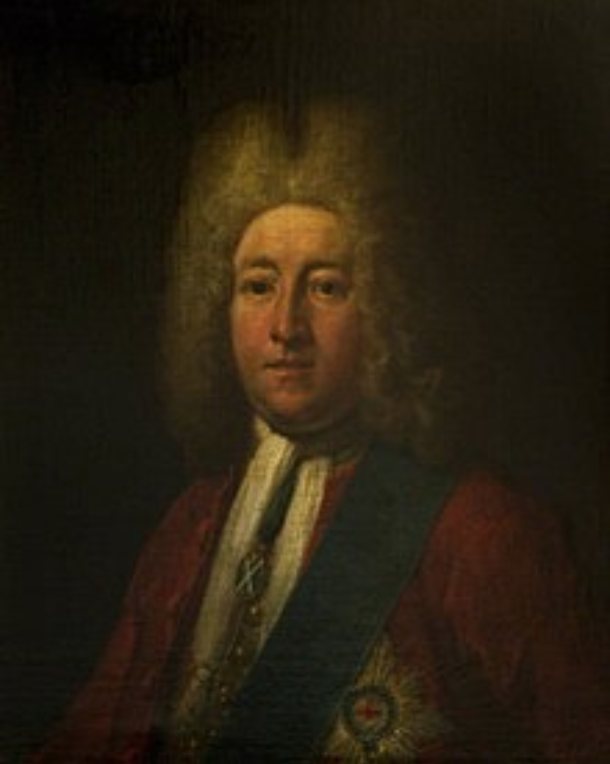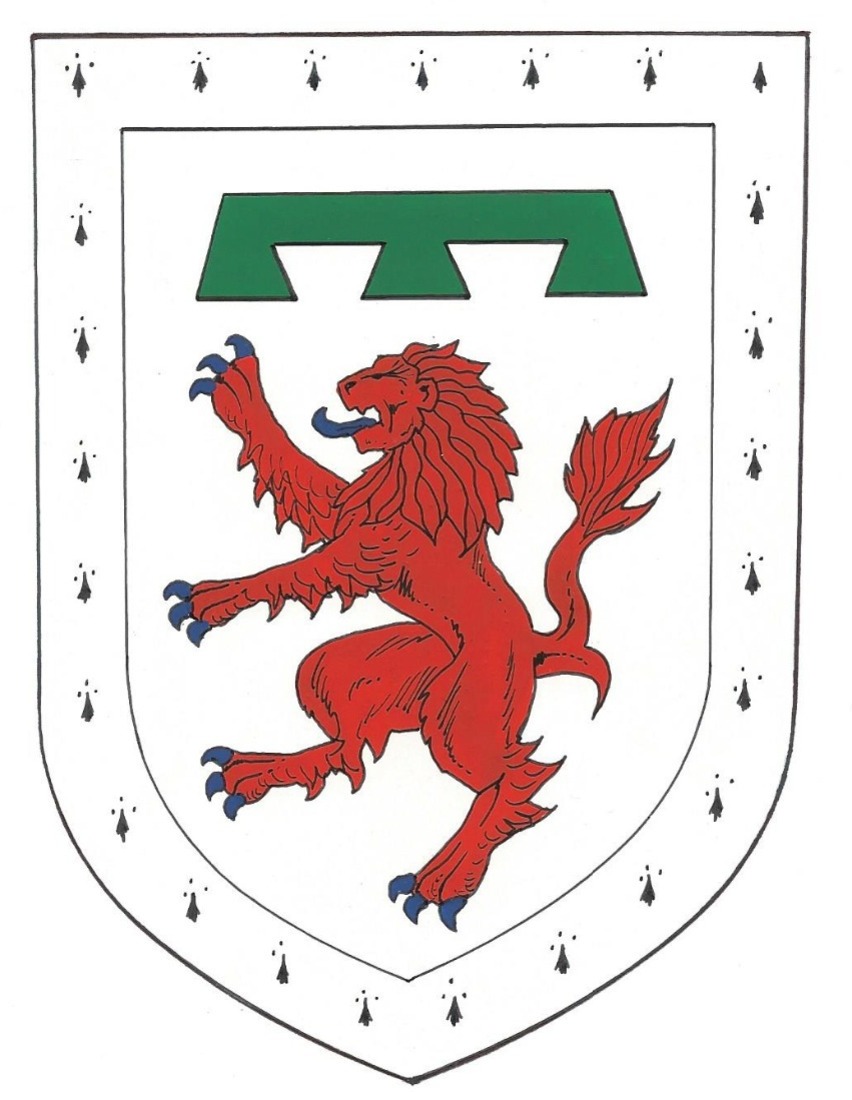John Erskine of Mar
Sovereign Grand Commander 1716-1730


The Mormaer* or Earl of Mar is recorded by Burke`s Peerage as “the most ancient title in Great Britain, perhaps in Europe.” It has been held in succession by members of the great historic houses of Douglas, Stewart, Drummond and Erskine and reaffirmed seven times in the Peerage of Scotland. The reasons for so many re creations was either because of the inability of the holder of the title to produce an heir or because they had upset the king or queen and therefore forfeited their lands and titles. The province of Mar which covered large parts of north east Scotland was named after the Mormaer a Pictish dignitary inferior only to the king.
Due to the numerous changes referred to above, many of the holders of the Earl of Mar title have what seem at first glance incorrect, conflicting and numerous numbers. This is particularly true of the John Erskine who became Sovereign Grand Commander of the Ordre de Lys in 1716 (while he was in exile in France together with Lord George Seton) and who had succeeded to the title and the heavily loaded with debt family lands in Clackmannanshire on the death of his father in 1689, the same year that
William of Orange was declared King William III. Depending on which biography you read he was either the 23rd or in some cases the 22nd Earl of Mar (from the first creation of the title) or the 6th Earl (from the 7th creation in 1565) and in still others he is classified as both. He also appears occasionally as 11th Earl of Mar as reckoned from the 2nd creation (1496).
Born in 1675 his father was Charles Erskine 21st or 22nd Earl of Mar and his mother Lady Mary Maule daughter of George Maule 2nd Earl of Panmuir.His mother gave birth to eight sons and one daughter but only three sons and the daughter survived to maturity. John was the sixth son but as his five elder brothers all died, he was left as the eldest. Anti Stewart historians have claimed that John Erskine was deformed and that his portraits were skilfully painted to disguise the fact and in his earlier years he was initiated into every species of licentious behaviour by Neville Payne *a dramatist, and Jacobite conspirator said to have been the most adroit and resolute agent of the exiled Stewart family and one who was reputedly involved in the Montgomery Plot of 1690. †
Whatever he was in his youth, John Erskine eventually developed his family estates, established Alloa as a coal mining centre, and became a politician, the governor of Stirling Castle, a Jacobite army officer, a talented amateur architect and landscape designer who converted Alloa Tower into an elegant modern house around which he created an extensive formal landscape. He even proposed a new town for Edinburgh.
Upon succeeding his father, Erskine took his seat in the Scottish Parliament and in 1697 under the patronage of the Duke of Queensbury, Queen Anne appointed him as a Privy Councillor for Scotland and gave him command of a regiment of foot; he was also admitted into the noble Order of St. Andrew. Between 1702 and 1714 he served twice as Secretary of State for Scotland and as a Commissioner for the Union in 1707 played a key role in the Union of England and Scotland, being one of the lead negotiators, not because he wanted to lose the Scottish Parliament but because he wanted a permanent peace and access to English markets and colonies for Scottish traders. He later became a Representative Peer for Scotland, Keeper of the Signet and once again a Privy Counsellor. He was admitted into the Order of the Thistle in 1706 (but Degraded in 1715) by Queen Anne and in 1713 was made Third British Secretary of State by the Tories.
During the aforementioned time he gained a reputation for supporting whatever side suited his purpose, sometimes supporting the Whigs and at other times the Tories and as a result of these vacillations became known as “Bobbing John.” Posterity has recorded this nickname in the Scottish folk song “Cam Ye O`er Frae France” made famous by such as groups as Steel Eye Span and The Corries, which contains the following lines:
“Hey for Sandy Don, Hey for Cockalorum.
Hey for Bobbin` John And his Heilan quorum”
By 1713 John Erskine had become disillusioned with the Union as did many of its initial Scottish supporters and proposed an unsuccessful Resolution to have it repealed.
The accession to the throne of the Hanoverian King George I brought a significant change in his fortunes as despite welcoming the new king by sending a letter of support, he, like some other high flying Tories at that time including Henry St. John, Viscount Bolingbroke, Secretary of State to Queen Anne, and James Duke of Ormonde an Irishman who had fought for King William at the Battle of the Boyne and had been Captain General under Queen Anne, were deprived of their offices of state and thus
saw their political ambitions crushed. As a result, they started planning a Jacobite rising in England and Scotland centering on Northumberland, Durham, Lancashire and the Scottish Highlands where Jacobite sympathies and support was the strongest.
In August 1715 John Erskine heavily disguised as a seaman, together with General Hamilton and Colonel Hay worked on a coal ship going from Gravesend to Newcastle and after changing boats at that city, carried on to Fife thereby quietly returning to Scotland to light the flames of revolution at Braemar at what has become known as the” Hunting of Braemar.”
September 1715 saw him in the small Deeside town of Aboyne meeting with a number of Highland Chiefs and later that same month back in nearby Braemar he proclaimed James Francis Edward Stewart as King James VIII King of Scotland, England, France and Ireland and so began the latest Jacobite uprising. Also joining in the rebellion at this time was Lord George Seton, Earl of Winton who later had his titles taken from him; the earldom as a consequence lapsed and he was condemned to death although he escaped to France where he joined the Jacobite Court in exile.
Initially amassing over 10,000 troops the Jacobite Highland army (which also included some French and Spanish troops sent in support) quickly took Perth and most of the northern Highlands. However such successes were short lived and in November of 1715 just outside of Dunblane the Jacobite army of about 12,000 troops (including Clan Cameron and Clan Macdonald) met the Government army of only 6,000 led by John Campbell the 2nd Duke of Argyll and despite superior numbers, Erskine was unable to claim a clear or conclusive victory over the Government army (most historians reckon at best it was a draw); this event being recorded in the annals as the Battle of Sheriffmuir.
This lack of success at Sheriffmuir seems to have deflated the Jacobean army, and the French and Spanish contingent in their ranks quickly returned home and although odd skirmishes took place over the next few weeks the rebellion had basically ended at Sheriffmuir. By the time the exiled James Stewart, the Old Pretender, finally
arrived in Scotland in December of that year, the uprising had just about petered out and so he together with the Earl of Mar sailed from Montrose to France from where they never returned.
The battle itself was commemorated by Robert Burns in one of his most famous songs “The Battle of Sherramuir” and more surprisingly the uprising and its failure featured in a song by the progressive rock group Genesis called the “11th Earl of Mar.”
Whilst in exile Mar was very active on the part of James Edward Stewart attempting to persuade foreign powers, including the King of Sweden, to take up the Jacobite cause and set up an aid fund to which the Earl of Eglinton offered £3000. As a result of his activities in 1716 the Hanoverian court passed a Writ of Attainder for Treason†† against Mar which was not lifted until 1824 by an Act of Parliament and although as a result of this attainder Erskine had forfeited his lands and titles, James Edward Stuart made him Jacobite Earl of Mar. It appears that the Old Pretender while in exile created a number of titles of England and Scotland that were meant to come into effect once he had assumed power and as he never did the titles never took effect, at least not in Britain.
Between 1716 and 1724 Erskine moved between France and Italy and as well as his work on behalf of the Jacobites he also tried to seek pardon from the British Court by acting as a double agent and it was during these years that he was thought to have betrayed the leaders of a plot to set the Jacobite Pretender on the throne for which Bishop Atterbury was tried and sent to permanent exile in Paris (whilst others were executed).
Eventually Mar fell out of favour with the Old Pretender and was supplanted by James Murray later Earl of Dunbar and so Erskine left Rome and moved to Paris. It was here that he obtained money, a yearly pension of £2000 for himself and £1500 for his wife and daughter and his liberty to remain in France provided he kept himself free of any plots against the British Government. Discovering that Mar was in receipt of this British Government pension, James Edward Stuart cut all ties with him.
The Earl of Mar spent his remaining years in Paris and Aix la Chapelle (Aachen) where he died in 1732. His death was reported in the Gentleman’s Magazine but by that time he had vanished from the political scene to such a degree that no-one, including Jacobites, took any notice.
John Erskine Earl of Mar, married Lady Margaret Hay, daughter of Thomas Hay 7th Earl of Kinnoul in Twickenham, London in 1703 they had one son Thomas who in 1749-1750 was Grand Master of the Grand Lodge of Scotland. Lady Margaret died in the fourth year of their marriage and John married his second wife Lady Frances Pierrepoint, daughter of 1st Duke of Kingston upon Hull and Marquis of Dorchester. Lady Frances went mad in 1728 which has been blamed on the stress of living in France, despite this she outlived her husband by some 35 years, dying in 1767.
John Erskine had a brother, James Erskine, a lawyer who became lord justice clerk of the Court of Sessions and Lord Grange in 1710; he took no part in the Jacobite uprising of 1715.
* Mormaer is a Pictish or Gaelic word meaning Great Steward or Bailiff and was applied to regional or provincial rulers in the medieval kingdom of the Scots.
† This Montgomery being Sir James, 4th Baronet and 10th Laird of Skelmorlie who went to London with his allies the Earl of Annandale and Lord Ross to present a declaration of Scottish Grievances to King William who declined to listen to there complaints. As a result, Montgomery consorted with the Jacobite agent Neville Payne and together they concocted a plot to engineer the restoration of King James. The plot never really took off and Sir James Montgomery fled to Paris where he was well
received by the Jacobite court at the Chateau de Saint Germains en Laye. Returning to London sometime later he was captured and imprisoned but within a few weeks managed to escape back to Paris. He died at St. Germains in 1694
† †Writ of Attainder – In English criminal law attainder is a metaphoric stain or corruption of the blood which arises from being condemned for a serious capital crime such as felony or treason. It entails not only the loss of property and hereditary titles but also the right to pass them on to heirs.


























